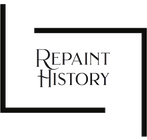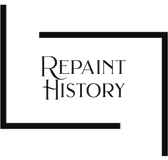Repaint History Call For Art Fund Recipient: Alexandria Valentine
Thrilled to share our Q&A with Alexandria Valentine, one of Repaint History's Call For Art fund recipient. Hope you enjoy this conversation as much as we did!
Tell us about yourself.
My name is Alexandria Valentine. I’m a Chicago native (South Side!), an interdisciplinary artist, archivist, cultural worker, a lover of pleasure and a human committed to liberation.

Alexandria Valentine, Image by Osee Obaonrin
Tell us about an encounter with art that has shaped your practice.
Going to see the Kerry James Marshall exhibit, Mastry, a few years ago in Chicago. I went with my mother, father, grandmother and grandfather. Outside of the gorgeous work by Kerry James Marshall, which seems to grab hold of your soul in the most beautiful way possible, what struck me the most was the look of awe in my family’s faces. Like someone seeing the world in color for the first time. It meant a lot to me to see that type of joy and enchantment in their faces. It motivated me to want to make work that elicits that sort of reaction, especially for Black people. My hope for my work is that it makes people feel seen, understood and acts as a bridge between them and an emotion, an ambition, the next day. Art has very much so been that for me, someone reaching out to me to tell me that I’m not alone, that I’m seen, giving me hope to keep moving forward. Getting to experience that with my loved ones, the people who raised me, was something I’ll never forget.

Black and Blue Series 003, Alexandria Valentine
Which artists inspire your work?
Lorna Simpson, Carrie Mae Weems, Kara Walker, Deborah Roberts and LaToya Ruby Frazier are inspirational artists I hold dear to my heart.

Departure, Alexandria Valentine
What challenges have you faced throughout your career as an artist and what advice would you give to artists beginning their career?
I think one of my greatest struggles has been building community and not feeling like I’m just creating artwork inside a vacuum. I’ve always wanted to be in conversation and community with other artists, but for a variety of reasons in the past that has been quite difficult. I feel a lot better about it now that I’ve started to find a community with other artists on social media. Having the money to make the type of art I’ve wanted to make was also particularly difficult as an undergraduate student. When you go to art school, it’s very clear that the kids whose parents are just writing checks for them to be able to go to school and giving them hefty allowances have more access to materials, especially if you’re wanting to create large work. Turning to collage and writing, in a way, feels like one of the ways I maneuvered that hierarchy.
I just need my computer or a pen and paper to write, I can create collages with materials that are lying around my house. To artists at the beginning of their careers I would say what my high school art teacher told us one, sunny afternoon: “Pay attention to what you pay attention to.” I’ve heard that statement in my head when I’ve felt adrift in my art practice over and over again. Your greatest strength is that you are a unique human with a history and an assortment of memories all your own. Mine from that. What stands out to you, in the world? When you turn inward? What hurts? What brings you joy? What do you want to say?
How has your practice been affected by the turbulence and uncertainty of the past year? Has your work or the way you approach it changed at all?
Art has always been what I’ve turned to during chaotic times. When I'm surrounded by chaos, I go inward, and so much of the art is there for me. In my feelings, in my thoughts, my longings. Before the pandemic began I was actually in a bit of a rut when it came to visual art. I’ve recognized that my practice really demands that I relinquish control. There are times when I can make visual art and there are times when I can’t. Just like there are times when I can write and times when I can’t. Mind you, when I say “can’t” I mean I can’t create work that feels good and fluid and satisfactory to me. I don’t like for my work to feel forced, if I feel like I’m forcing it that’s usually a signal to me that I need to be doing something else. Like reading, talking to my loved ones, going for a walk, watching a documentary. I need to feed myself in a different way and eventually I’ll be able to get back to the piece or the body of work I had to take time away from. The beginning of the pandemic was the beginning of a period of time in which I could make visual work. I’ve pretty much been making work non-stop since last March, I suppose that’s both because I’d had so much time away from it and because the chaos going on around me pushed me inward.

Black and Blue Series 001, Alexandria Valentine
What has your experience been in terms of mentorship and a sense of community in the art world, particularly among women artists?
I’ve struggled with the whole concept of mentorship since the inception of my career and studies as an artist. The art world is strange. Whether it’s been a lack of available mentors, feeling a bit snubbed by women I’d hoped to connect with, I’ve never had a mentor who was a woman. I’ve always wanted one, but it hasn’t happened for me. Early in my undergraduate experience I felt rather desperate for that sort of connection and mentorship, but at this point I’ve let that dream go. On a lighter note though, I made an Instagram account last March and I’ve found a lovely community on Instagram that I feel supported by and excited to share with. It’s actually kind of funny that I tend to feel supported more by strangers on the internet than by actual people I’ve encountered in person.

Self in the present moment, Alexandria Valentine
How will the Repaint History fund support your career?
I’m going to get myself some nice new toys. I’ve been wanting to experiment with painting and working on surfaces outside of paper, so I think I’m going to use the money from this fund to invest in that.



